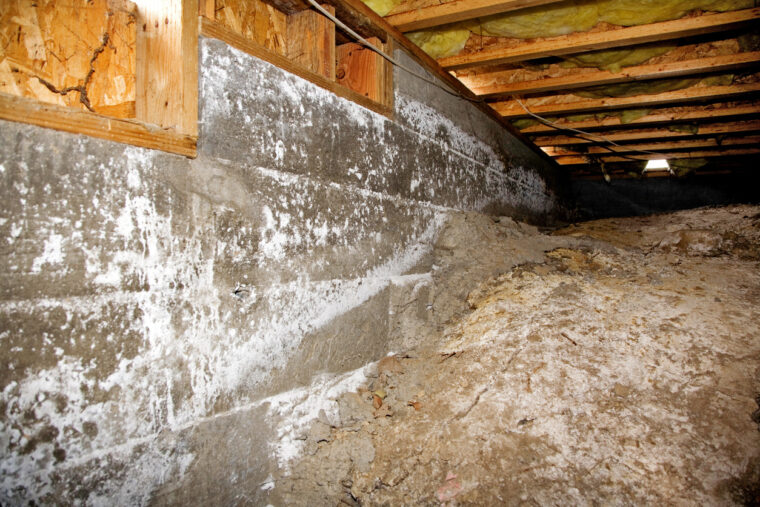Introduction
Waterproofing inspection is a process to check if your home or building is protected from water damage. It’s important because water can cause serious problems, like mold and damage to walls. By doing regular inspections, you can find and fix any issues before they get worse. During an inspection, experts look for cracks, leaks, or any signs that water might be getting in. This helps keep your home safe and dry. Regular checks are like a shield, making sure your waterproofing is working well and protecting your space from moisture problems.
What is Moisture Ingress?
Moisture ingress is when water sneaks into a building through tiny cracks, gaps, or holes. This can happen for many reasons, like when the walls or roof have small cracks, or when the waterproofing isn’t done properly. Sometimes, even a little rain can find its way inside if there’s a weak spot. Over time, this water can cause big problems, such as making the walls damp, causing paint to peel, or even leading to mold. That’s why it’s important to know about moisture ingress and how to stop it.
When moisture gets inside, it doesn’t just go away. Instead, it stays trapped in the walls or floors, slowly causing damage. If you don’t catch it early, the damage can become worse, leading to expensive repairs. For example, damp spots might appear on your walls, or you might notice a musty smell. These are signs that moisture ingress is happening. But the good news is that with regular inspections and quick action, you can prevent moisture ingress from becoming a serious problem. By keeping an eye out for any signs of water getting in, you can protect your home and keep it safe and dry.
Steps in a Waterproofing Inspection
When it comes to a waterproofing inspection, there are several important steps that help keep your home safe from water damage. First, experts usually start with a visual inspection. This means they carefully look at the walls, floors, and ceilings to spot any cracks, damp spots, or signs of leaks. This step is like giving your home a check-up to make sure everything looks good on the outside.
Next, they often use a moisture meter. A moisture meter is a special tool that helps find hidden moisture inside the walls or floors. Even if everything looks fine on the surface, this tool can detect if there’s any moisture hiding underneath. This is important because sometimes water damage isn’t visible right away.
Finally, the experts will check the drainage systems around your home. Proper drainage is crucial because it keeps water from pooling around the foundation. If the drainage isn’t working well, water might seep into the building.
Common Signs of Moisture Ingress
When moisture finds its way into your home, it leaves behind some clear signs. One of the most noticeable signs is damp spots. These can appear as dark or wet patches on your walls or ceilings, and they don’t seem to dry out. These spots are a clue that water is seeping in somewhere it shouldn’t be, which can lead to bigger problems if not fixed.
Another common sign is peeling paint. When water gets into the walls, it causes the paint to bubble up and start to peel away. This happens because the moisture underneath makes it hard for the paint to stick to the wall. Peeling paint might look like just a cosmetic issue, but it often means there’s water damage hiding behind it.
A musty smell is also a strong indicator of moisture ingress. This unpleasant odor comes from mold or mildew growing in damp areas of your home. If you notice a musty smell, it’s important to investigate further because it means that moisture has been around long enough to cause mold to form.
By paying attention to these signs—damp spots, peeling paint, and musty odors—you can catch moisture problems early and take steps to protect your home from further damage.
Preventing Moisture Ingress
Preventing moisture ingress is key to keeping your home safe and dry. One of the best ways to do this is through regular maintenance. By checking your home’s waterproofing regularly, you can catch small issues before they become big problems. For example, if you notice a tiny crack in a wall, it’s important to seal it right away. Even small cracks can let water in, leading to moisture ingress over time.
Another important step is making sure your home has proper drainage. This means checking that gutters and downspouts are clear and directing water away from the house. If water is allowed to pool around your home’s foundation, it can eventually seep inside, causing damage.
It’s also helpful to keep an eye on the condition of your home’s exterior. Sealing any gaps around windows, doors, and other openings can prevent water from sneaking in. Additionally, using good-quality waterproofing materials during construction or renovations can make a big difference in preventing moisture ingress.
By taking these simple steps—regular maintenance, proper drainage, and sealing gaps—you can protect your home from moisture ingress and avoid costly repairs in the future.
When to Call a Professional
Knowing when to call a professional is very important in dealing with moisture ingress. Sometimes, the signs might be clear, like persistent damp spots or peeling paint, but at other times, they might be hidden, making it hard to spot the problem. When you see these signs, it’s a good idea to reach out to an expert who can help.
Professionals have the tools and knowledge to identify the source of moisture ingress, even if it’s not immediately obvious. They can check areas that are hard to reach and use special equipment, like moisture meters, to find hidden moisture. This is important because the longer moisture is allowed to stay in your home, the more damage it can cause.
Also, if you’ve tried to fix the problem yourself but it keeps coming back, it’s definitely time to call in a professional. They can provide a more permanent solution and give advice on how to prevent future issues. By getting help early, you can avoid more serious damage and protect your home.
In the end, calling a professional when needed can save you time, money, and stress, ensuring your home stays dry and safe.
Conclusion
Regular waterproofing inspections and early detection of moisture ingress are crucial for keeping your home safe and dry. By paying attention to signs like damp spots, peeling paint, and musty odors, you can catch problems before they get worse. Simple steps like maintaining proper drainage and sealing cracks can prevent moisture from entering your home. However, when issues persist or seem too difficult to handle, it’s important to call a professional. Taking these actions will help protect your home from damage, saving you time and money in the long run. Keep your home safe by staying vigilant and proactive.
Keep an eye for more news & updates on Vents Tribune!

